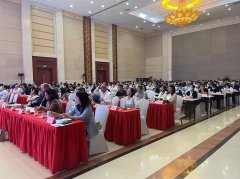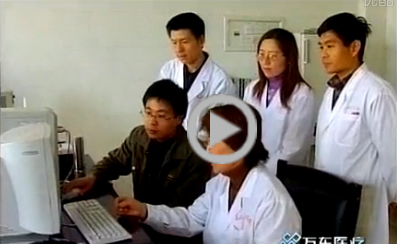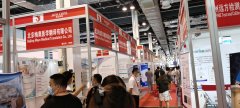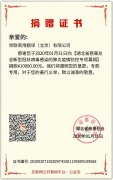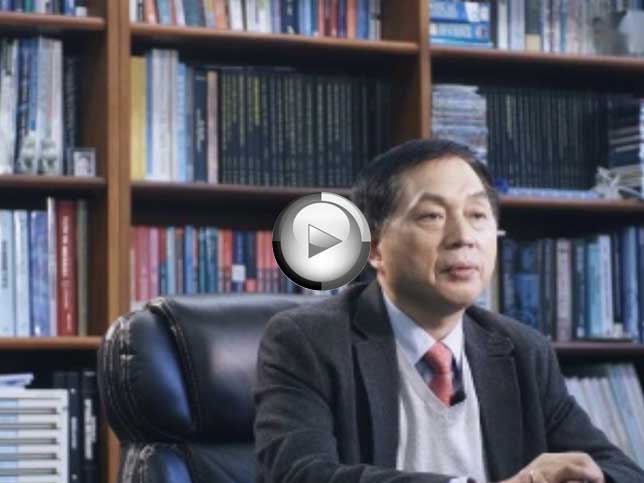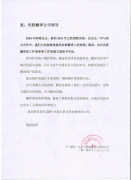|
时间 |
原文 |
中文 |
|
00:00-00:07 |
World Health Organization |
世界卫生组织 |
|
00:08-00:42 |
Management of The Young Child With Wheeze |
幼儿气喘病管理 |
|
00:43-00:57 |
This video illustrates the identification and management of the young child with wheeze,The use of rapid acting bronchodilators, and the assessment of the response to treatment. |
这个视频介绍的是如何识别并管理幼儿气喘病,如何使用迅速生效的支气管扩张剂,如何评估治疗效果。 |
|
00:58-01:08 |
The video has been made for doctors, nurses, and other health staff working in small hospitals or health centers in developing countries. |
该视频的目标观众是发展中国家小医院或卫生所工作的医生、护士和其它工作人员。 |
|
01:09-01:19 |
It should be used as an introduction on how to assess and treat child with wheeze. It is intended to complement practical clinical experience. |
该视频应作为一个有关如何评估和治疗幼儿哮喘病的介绍教程来使用。其目的是来补充实际临床经验。 |
|
01:20-01:30 |
We will look at this in three sections:
Assessment,
Treatment,
Response to treatment
For an acute episode of wheeze |
我们会从三个方面来介绍:
评估
治疗
急性气喘的治疗效果 |
|
01:31-01:40 |
For guidelines on the management of children with chronic wheeze, refer to the pocket book of Hospital Care for Children. |
有关幼儿慢性气喘的管理,请参阅袖珍书《Hospital Care for Children(儿童医院护理)》 |
|
01:41-01:59 |
The video illustrates children with wheeze, shows the recommended equipment for their assessment and treatment. In particular, it deals with the correct use of meter-dose inhaler with a spacer devise and correct use of the nebulizer. |
该视频介绍了幼儿气喘症状,并展示了气喘病诊断和治疗的推荐器材。尤其是,该视频还展示了如何正确使用带储存腔的定量吸入器,以及如何正确使用喷雾器。 |
|
02:00-02:12 |
It is important to be able to assess a child with acute wheeze accurately so that correct decisions for treatment can be taken. |
必须能够精确诊断急性幼儿气喘病,以便能做出正确的治疗判断,这一点很重要。 |
|
02:13-02:19 |
The Assessment of Wheeze |
气喘病的诊断 |
|
02:20-02:34 |
When a child is brought to you with cough or difficult breathing, you should examine the child to determine whether wheeze is present. The clinical signs of wheeze include
The wheeze sound on expiration |
当幼儿有咳嗽或呼吸困难的症状时,应检查幼儿,并诊断是否有气喘症状。
气喘病的临床症状包括:
呼气时有呼哧呼哧的声音
|
|
02:35-02:45 |
Before disturbing the child, listen to the child’s breathing. You would probably have to put your ear close to the child’s mouth or use a stethoscope to hear the sound clearly. |
首先听孩子的呼吸声。把耳朵放在孩子的口边或者使用一个听诊器,会听得更清楚一些。 |
|
02:46-02:57 |
Listen to the sound as these children breathe out. The wheeze sound is often described as a musical sound made as the child breathes out. |
听一下这些孩子呼气时的声音。孩子呼气时的呼哧呼哧声经常被描述为音乐一样很有节奏。 |
|
02:58-03:48 |
Notice that wheeze is whispered as the child breathes out, but the actual character of the wheeze sound can vary from child to child. |
请注意:孩子呼气时小声发出呼哧呼哧声。不过这种呼哧呼哧声并不是每一个孩子都一样。 |
|
03:49-04:13 |
Let’s look and listen again. |
我们再观察一次,再听一次。 |
|
04:14-04:49 |
In addition to the wheeze,you may have observed the following features, look closely at the child’s chest, the child may be taking longer to breathe out and then breathe in. A child with wheeze may also have chest indrawing. The child may have to make an effort to breathe out.This may result in respiratory stress. With a child in obvious discomfort, and experiencing difficulty in talking, drinking, or breast feeding. In order to observe the additional signs, you must look carefully.
|
除了呼哧呼哧的声音之外,你可能也观察到了以下特征:仔细观察孩子的胸部,孩子呼气时可能需要花更长的时间。患有气喘的幼儿胸部可能会下陷。孩子呼气时必须使劲,从而导致呼吸窘迫。孩子明显很难受,难以说话、饮水或喂奶。要了解更多的症状,你必须仔细观察。 |
|
04:50-04:58 |
You should not expect to see or hear all of these signs in every child with wheeze. |
并不是在每一个患有气喘病的幼儿身上都能发现所有这些症状。 |
|
04:59-05:48 |
Watch this child: which of the signs of wheeze do you recognize in this child? |
观察这个小孩:你在这个小孩身上发现了气喘病的什么症状? |
|
05:49-06:08 |
These are the signs we recognized: we heard the sound on expiration; longer to breathe out than to breathe in; chest indrawing; and making an effort to breathe out.You may need to wait until the child is relaxed to look and listen for wheeze. |
以下是我们所识别的症状:呼气时的呼哧呼哧声,呼气比吸气时间长;胸部下陷;呼气需要使劲;要观察并听到孩子的呼哧呼哧声,要等孩子放松下来。 |
|
06:09-06:40 |
The commonest causes of wheeze in young children in developing countries are acute respiratory infections, such as cough, and cold and bronchoalveolitis and pneumonia and asthma. |
发展中国家幼儿气喘病最常见的原因是急性呼吸道感染,例如咳嗽,感冒和支气管肺炎, 肺炎和哮喘病。 |
|
06:41-06:51 |
Since pneumonia is a major cause of death in young children in most developing countries, it is particularly important always to consider this diagnosis in children with wheeze. |
由于肺炎是发展中国家幼儿死亡的主要原因,因此如果幼儿患了气喘,一定要考虑是否患了肺炎。 |
|
06:52-07:05 |
Having examined the child presenting with cough or difficult breathing, and recognized the child has wheeze, decide upon the correct treatment for that child. |
检查了咳嗽或呼吸困难的孩子,诊断孩子患有气喘之后,就需要给孩子采取一种正确的治疗方式。 |
|
07:06-07:19 |
Wheeze is caused by narrowed air passages. In most children, this is due to the inflammation of the air ways, and spasm in the muscles in the walls of the air ways. |
气喘是由于呼吸道变窄而造成的,而对于大部分孩子而言呼吸道变窄又是由于呼吸道发炎以及呼吸道管壁肌肉痉挛而引起的。 |
|
07:20-07:34 |
The spasm should respond to the treatment with a bronchodilator. A bronchodilator is a drug that helps these children breathe more easily by opening the air passages of the lungs, and relaxing the bronchospasm. |
呼吸道痉挛可通过支气管扩张剂来治疗。支气管扩张剂是一种药物,可打开肺部的呼吸道,放松支气管痉挛,从而让孩子的呼吸轻松一些。 |
|
07:35-07:41 |
And an essential step in the assessment of children with wheeze is to look at the response to bronchodilator treatment. |
幼儿气喘病诊断中的一个关键步骤就是查看支气管扩张剂的治疗效果。 |
|
07:42-07:53 |
It is important that small hospitals have not only oral salbutamol for the treatment of mild wheeze, but also a rapid acting bronchodilator available. |
小医院不仅需要治疗轻度气喘病的口服药物舒喘灵,还必须准备一种速效支气管扩张剂。这一点非常重要。 |
|
07:54-08:03 |
Rapid acting bronchodilators produce a response within 15 minutes, allowing you to make an assessment of the child’s wheeze within a short time. |
速效支气管扩张剂能在15分钟内起效,这样就能在很短时间内对幼儿气喘病情做出诊断。 |
|
08:04-08:23 |
They are particularly useful in treating children with severe wheeze and helping to decide the cause of the wheeze. Those who respond to bronchodilator treatment are likely to have asthma, whereas those who do not are more likely to have pneumonia or bronchoalveolitis. |
这样的疗法在治疗严重气喘幼儿的过程尤其有用,并有助于找到气喘的病因。如果支气管扩张剂治疗有效,则幼儿可能患了哮喘病;如果支气管扩张剂治疗无效,则幼儿更可能患上了肺炎或支气管肺炎。 |
|
08:24-08:44 |
It is therefore important that rapid acting bronchodilators be available in health centers, small hospitals, and the right equipment be available to use them properly and that doctors and nurses and other health workers are trained to administer them correctly. |
因此卫生所、小医院必须备有速效支气管扩张剂以及相应的器材,而医生、护士和其它医疗工作人员必须接受过专门培训,知道如何正确使用支气管扩张剂。 |
|
08:45-08:54 |
Rapid acting bronchodilator treatment methods |
速效支气管扩张剂治疗方法 |
|
08:55-09:08 |
There are three methods of giving treatment with rapid acting bronchodilators for the assessment and treatment of wheeze that are recommended for use in health centers and small hospitals. These are: |
有三种速效支气管扩张剂治疗方法, 推荐卫生所和小医院用于气喘病的诊断和治疗之中。这些方法是: |
|
09:09-09:22 |
The inhalation of salbutamol aerosol or mist using a meter-dosing inhaler or a nebulizer or through the injection of epinephrine, also known as adrenalin. |
使用定量吸入器或喷雾器吸入舒喘灵气雾剂或喷雾或者注射肾上腺素。 |
|
09:23-09:32 |
In most circumstances, inhalation using an aerosol is the most effective and safest method of delivery. |
在大部分情况下,气雾吸入是最有效也最安全的给药方式。 |
|
09:33-09:38 |
Aerosol delivery |
气雾给药 |
|
09:39-09:59 |
The two methods of aerosol delivery currently available are meter-dose inhalation and nebulization. An additional method used by adults and older children: dry powder inhalation:is ineffective for most infants and young children, therefore will not be discussed in this video. |
目前可用的两种气雾给药方式包括定量吸入和喷雾。还有一种给药方式:干粉吸入给药,适合成年人和年龄较大的儿童,却对大部分婴幼儿完全无效,因此就不在这个视频中讨论了。 |
|
10:00-10:09 |
The meter-dose inhaler when used with a spacer devise, and nebulizer have both shown themselves to be effective treatment methods in young children. |
带储存腔的定量吸入器和喷雾器都证明是非常有效的幼儿气喘病治疗方法。 |
|
10:10-10:15 |
Metered Dose Inhalers Using a Spacer Device |
使用储存腔的定量吸入器 |
|
10:16-10:34 |
Most children under seven or eight years of age will be unable to use metered dose inhaler effectively when they are wheezing, this is because they are not able to time everything correctly to breathe in the salbutamol aerosol when it is delivered by the metered dose inhaler. |
七八岁以下的幼儿在气喘时无法有效使用定量吸入器,因为他们无法正确计算时间来吸入舒喘灵气雾。 |
|
10:35-10:44 |
However, metered dose inhaler can be successfully modified for use by infants and young children with addition of a spacer devise. |
不过,如果使用了储存腔,则定量吸入器可成功用于婴幼儿气喘病治疗。 |
|
10:45-11:06 |
The jet of spray provided by the metered dose inhaler is trapped in the spacer chamber, the propellants and evaporates leaving only the bronchodilator particles. The small particles are more likely to reach deep into the child’s airways and so be more effective than leaving the ways. |
定量吸入器的喷雾被限制在储存腔中,气雾喷射剂和蒸发物中含有大量支气管扩张剂微粒。这些微粒会深入幼儿的呼吸道,从而更有效地治疗幼儿气喘,而不是逃逸到空气中。 |
|
11:07-11:33 |
The metered dose inhaler is placed into the end of the spacer devise, the inhaler is depressed twice to generate two puffs.The child is instructed to take five full breaths with the mouth closed around the mouthpiece. The spacer devise creates a reservoir of spray for the child to breathe.It removes the need for the child to breathe in at the moment the inhaler is depressed. |
定量吸入器安装在储存腔的一端,按压定量吸入器两次,喷出两股药物。孩子口含储存腔的开口,按照医护人员的说明吸入五大口药物。储存腔里保存着喷雾,供孩子吸入。储存腔让孩子不必在按压定量吸入器的同时吸气。 |
|
11:34-11:45 |
A spacer devise with a mask can be used with young children who cannot use a mouthpiece. If commercially manufactured spacer devise is not available, it is quite simple to make your own. |
如果幼儿不会使用口衔,则可使用带有面罩的储存腔。如果市场上没有储存腔,制作一个也非常简单。 |
|
11:46-12:06 |
Very effective spacer devises can be easily made from half or one litre plastic bottles. However, plastic spacer devises can build up electric static charge. The charge causes salbutamol to stick to the plastic spacer devise reducing the amount available to the child. |
可以使用半升或一升装塑料瓶轻松制成高效储存腔。然而,塑料储存腔会积累静电。而静电会造成舒喘灵黏到储存腔里,从而降低了孩子吸入的药物量。 |
|
12:07-12:21 |
Washing the spacer devise in household detergent solution or soap before use can stop this occurring. This simple measure can substantially improve the effectiveness of this treatment. |
使用之前用家用洗涤剂溶液或肥皂清洗储存腔能阻止静电的产生。这个简单的方法能大幅提升该疗法的效果。 |
|
12:22-12:34 |
To make a spacer devise from a plastic bottle, use a pair of scissors or a sharp knife, to carefully cut out a shape similar in outline to the mouthpiece of the inhaler. |
要用塑料瓶制成一个储存腔,可使用一个剪刀或尖锐的刀子,仔细剪成一个和吸入器开口轮廓相似的口子。 |
|
12:35-13:00 |
The spacer devise[C1] is then pushed into the hole you have created. The open end of the bottle is placed into the child’s mouth. The first time you use a homemade spacer devise, use three to four puffs, afterwards you only need two puffs. After this the child breathes in and out for thirty seconds. |
接着将吸入器插入您所切开的口子里,而瓶口则放到孩子的嘴里。第一次使用自制储存腔的时候,喷三到四下。此后只需喷两下。接着让孩子呼气吸气三十秒的时间。 |
|
13:01-13:04 |
The Nebulizer |
喷雾器 |
|
13:05-14:00 |
The nebulizer consists of a container into which a liquid mixture of salbutamol and water is placed. The salbutamol and water is placed here. A flow of six to eight litres per minute of oxygen or compressed air is then introduced here into the pipe which runs up to the center of the nebulizer. The flow of the oxygen or air into the nebulizer draws the salbutamol and water up the outer section of the central pipe. When it reaches the top of the pipe, it meets the oxygen or air here, the oxygen or air breaks up the salbutamol and water against this section of the nebulizer and turns it into a fine mist. The mist is then forced by the flow of oxygen or air out of the top section of the nebulizer, the child then inhales the mist. |
喷雾器有一个容器,里面放入舒喘灵和水的混合液体。舒喘灵和水的位置在这里。每分钟六到八升氧气或压缩空气被压入管道,这个管道直通到喷雾器的核心位置。氧气或空气流入喷雾器,将舒喘灵和水沿着中央管道的外层区域吸了上来。当舒喘灵和水抵达了管道的顶部,就遇到了这里的氧气或空气,这些氧气或空气将舒喘灵和水在喷雾器的这个部分不断激荡,将之变成细雾,接着氧气或空气激流将舒喘灵和水的细雾喷出去,让幼儿吸入。 |
|
14:01--14:37 |
It is important that the nebulizer is filled and used correctly.Unscrew the top of the plastic nebulizer, and add the salbutamol solution, 0.5 milliliters of liquid salbutamol should be used for children under five years. Add 2 milliliters of normal saline or sterile water, if normal saline or sterile water is not available, drinking water should be used after it has been strained with a cloth, boiled for twenty minutes, and cooled. |
正确填装和使用喷雾器非常重要。拧开塑料喷雾器的顶部,倒入舒喘灵溶液,五岁以下的儿童应使用0.5毫升液体舒喘灵。倒入2毫升普通盐水或无菌水,如果没有普通盐水或无菌水,则可使用饮用水,不过饮用水在使用之前必须经棉布过滤、煮开20分钟,并冷却。 |
|
14:38-14:58 |
Do not overfill the nebulizer. Attach one end of the tubing to the bottom of the nebulizer and the other to an oxygen supply with a flow of six to eight litres per minute or an electric air compressor, if available, a mask or TPS may be used. |
不要在喷雾器中倒入过多的液体。将软管的一端插入喷雾器底部,另一端插入到氧气瓶中,每分钟气流达到六到八升,或者插入到电动空气压缩器中,如果有的话,可以使用一个面罩。 |
|
14:59-15:17 |
The child should be treated until the liquid in the nebulizer has been nearly used up. This usually takes about ten minutes. It is not necessary to nebulize until all the liquid has been used. In practice about 0.5 milliliters will be left in the nebulizer bowl. |
幼儿在气雾治疗时,要用掉喷雾器中的大部分液体。这个过程一般需要10分钟。没有必要将喷雾器中的液体全部用完,在实践中,喷雾器容器中会留下大概0.5毫升的液体。 |
|
15:18-15:29 |
You can tell when this point is reached as splattering sound will occur, and at this stage, little of the residual fluid is being nebulized. |
到时候你就知道了,因为这时你会听到有泼溅的声音。在这个时候,剩余的一点点液体几乎没有气雾化。 |
|
15:30-15:46 |
After each use, wash the mask the tubing and the nebulizer with dish-washing detergent or soap and dry thoroughly. Do not boil or steam clean the tubing or nebulizer, as this may damage them. |
每次使用之后,请使用洗洁精或肥皂清洗面罩、软管和喷雾器,并彻底晾干。不要水煮或蒸汽洁净软管或喷雾器,因为可能会对这些器材造成损坏。 |
|
15:47-15:50 |
Subcutaneous epinephrine (adrenaline) |
肾上腺素 |
|
15:51-16:06 |
Subcutaneous epinephrine, which is also known as adrenaline, is given to young children by subcutaneous injection. It is also a rapid acting bronchodilator, which will act in about 15 minutes. |
可以给气喘幼儿皮下注射肾上腺素。这是一种速效支气管扩张剂。只需15分钟就会生效。 |
|
16:07-16:30 |
Great care needs to be taken when administering epinephrine. It is vital to check that correct strain of solution is used. 1 : 1000 dilution should be used and
0.1 ml per kg of body weight
A one-ml syringe should be used. And the dose measured very carefully.
|
在注射肾上腺素时必须非常小心。必须仔细检查,确保使用的溶液品种正确。应使用1:1000的稀释溶液,确保每公斤体重使用0.1毫升, 同时应使用一毫升注射器。剂量必须仔细衡量。 |
|
|
|
|
|
16:31-16:40 |
Follow up treatment |
后续治疗 |
|
16:41-16:57 |
Reassess the child after 15 minutes. A child with the first episode of wheezing and no respiratory stress after nebulization can usually be managed at home with oral salbutamol and supportive care only. |
15分钟后再次检查幼儿。如果幼儿只是第一次出现呼哧呼哧的气喘症状,而气雾治疗后没有呼吸窘迫的情况,则可在家治疗,只需口服舒喘灵和支持性护理即可。 |
|
16:58-17:14 |
If the child is still in respiratory stress,or has recurrent wheezing, give salbutamol by metered-doze inhaler or by nebulizer. If salbutamol is not available, give the child subcutaneous epinephrine. |
如果幼儿仍然呼吸窘迫,或者不断出现呼哧呼哧的气喘症状,则使用定量吸入器或喷雾器给药舒喘灵。如果没有舒喘灵药物,则给幼儿注射肾上腺素。 |
|
17:15-17:38 |
Reassess the child after another 15 minutes to determine subsequent treatment. If respiratory stress has been resolved, and the child has not fast breathing, advise the mother on home care with oral salbutamol syrup or tablets. If the respiratory stress persists, admit the child in the hospital for treatment. |
过15分钟再次检查幼儿,并决定以后的治疗方法。如果呼吸窘迫的症状消失而幼儿不再呼吸急促,则建议母亲在家护理幼儿,只需口服舒喘灵糖浆或药片。如果呼吸窘迫的症状仍然存在,则让幼儿住院治疗。 |
|
17:39-17:47 |
If the child has central cyanosis, or unable to drink, the child should be admitted in the hospital for treatment. |
如果幼儿中枢性发绀或者无法饮水,则住院治疗。 |
|
17:48-18:08 |
In children admitted to hospital, give oxygen, a rapid acting bronchodilator, or a first dose of oral prednisolone or another steroid.
The child should be given
1 milligram of oral prednisolone for every kilogram of weight once a day for 3 days. |
幼儿住院后,应给幼儿输氧,速效支气管扩张剂,或者第一剂口服脱氢皮质醇(强的松龙)或另一剂类固醇。
应给幼儿服用
每公斤体重1毫克强的松龙
一天一次,连续3天 |
|
18:09-18:21 |
A positive response should be seen within thirty minutes. If this does not occur, give rapid acting bronchodilator at up to one hourly intervals |
三十分钟后应该就能看到幼儿病情好转;如果幼儿病情并没有好转,则每隔一个小时给药速效支气管扩张剂。 |
|
18:22-18:54 |
If there is no improvement after three doses of rapid acting bronchodilator, plus oral prednisolone, give IV aminophylline. Intravenous aminophylline can be dangerous in overdose or when given too rapidly.
Weigh the child
And give the IV dose over at least 20 minutes.
Give
Initial dose 5-6 mgs/kg
(up to a maximum of 300 mg) |
如果三个剂量的速效支气管扩张剂和口服强的松龙之后仍然没有起色,则静脉注射氨茶碱。静脉注射氨茶碱过量或过快的话会非常危险。
量一下幼儿的体重
在至少20分钟的时间范围内静脉注射氨茶碱。
初始剂量5-6毫克/(幼儿体重)公斤
(最多300毫克)
|
|
18:54-19:24 |
This is followed by a maintenance dose of 5 mg/kg every 6 hours.
Administer the initial dose, if the child has received any form of aminophylline in the previous 24 hours. Stop giving intravenous aminophylline immediately if the child:
Starts to vomit
Has a pulse rate of greater than 180 per minute
Develops a headache
Has a convulsion
|
接下来每6个小时注射5毫克/(幼儿体重)公斤的维持剂量。如果在之前的24小时之内幼儿接受过任何形式的氨茶碱治疗,则给药初始剂量。如果幼儿出现了以下症状,则立刻停止给药:
开始呕吐
脉搏数超过180次每分钟
开始头疼
抽搐 |
|
19:25-19:49 |
All the techniques shown in the video have a role in the management of wheeze in young children. In terms of easy administering, availability and cost, metered-dose inhaler with spacer devises may be the most appropriate method for administering rapid acting bronchodilator to young children with wheeze in our patient facilities. |
本视频中所介绍的所有技术在幼儿气喘病治疗中都起着重要的作用。
就给药容易、可用性和成本而言,带储存腔的定量吸入器是我们医疗单位给幼儿给药速效支气管扩张剂的最合适方法。 |
|
19:50-20:10 |
However, in making your choice ,you must consider any local factor, which may influence your decision.Implementing the recommended procedures in this video will allow the correct treatment of wheeze in children with cough and difficult breathing. |
然而在选择疗法的时候,还是要考虑本地因素,这会影响到你的决定。使用本视频所推荐的疗法会让你能正确治疗咳嗽和呼吸困难幼儿的气喘症状。 |
|
20:11-20:23 |
This is an essential element in the management of children with acute respiratory infection and acute wheeze. Further information is contained in the pocket book Hospital Care for Children. |
这在急性呼吸道感染和急性气喘的幼儿治疗中是个关键因素。进一步相关信息,请参阅袖珍书《Hospital Care for Children(医院儿童护理)》 |
|
20:24-20:40 |
And the technical review paper Bronchodilators and Other Medications for the treatment of wheeze-associated illnesses in young children prepared by the WORLD HEALTH ORGANIZATION Department of Child and Adolescent Health Development. |
同时请参与世界卫生组织儿童和青少年健康与发展部门所发表的论文:Bronchodilators and Other Medications for the treatment of wheeze-associated illnesses in young children(幼儿气喘相关疾病的支气管扩张剂治疗和其它药物治疗)。 |
|
20:41-21:23 |
Narrated by
Maggie Mash
This video was produced by the world health organization Department of Child and Adolescent Health and Development, with assistance from
Dr. Janet Cumberland,
Sheffield Children’s Hospital
Sheffield UK
Hamish Simpson, Professor
David Thomas, Research Fellow
University Department of Child Health
Leicester, UK
And with the help and support of the staff and patients of
Al Anfushi Children’s Hospital
Alexandria Egypt
Childrens Hospital Bangkok
Thailand
El Chatby Hospital
Egypt
Leicester Royal Infirmary
Leicester UK
Sheffield Children’s Hospital
Sheffield UK
Directed by
Chris Dent
Produced by
World Health Organization
|
旁白:
Maggie Mash
本视频的制作方是世界卫生组织儿童和青少年健康与发展部门,得到了以下个人和单位的协助:
Janet Cumberland博士
Sheffield Children’s Hospital
Sheffield 英国
Hamish Simpson教授
David Thomas, 研究员
University Department of Child Health
Leicester, 英国
并且得到了以下医院员工和病人的帮助和支持:
Al Anfushi Children’s Hospital
Alexandria,埃及
曼谷儿童医院
泰国
El Chatby Hospital
埃及
Leicester Royal Infirmary
Leicester 英国
Sheffield Children’s Hospital
Sheffield 英国
导演:
Chris Dent
制作方:
世界卫生组织
|






